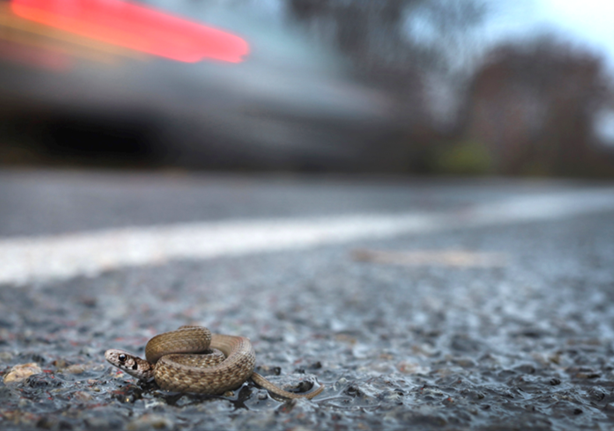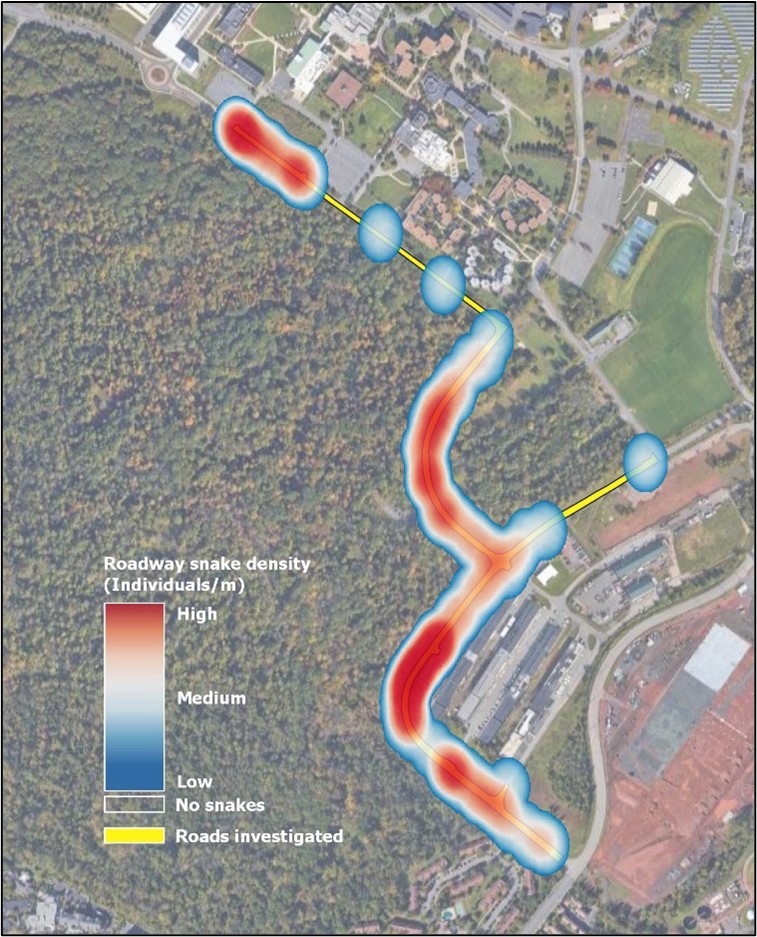Why did the snake cross the road? Unfortunately, it’s a hazardous crossing.

Photo of Dekay’s brown snake trying to cross the road; by Tianqi Huang, PhD student Rutgers Ecology & Evolution Program
Oftentimes, population ecology of herpetofauna is overlooked in the existing body of literature due to their elusive and secretive nature. However, some reptile species tend to occur at high densities in urbanized environments and can be frequently encountered, which renders them good model organisms to explore various aspects of reptile population ecology. Tianqi Huang, PhD student in Rutgers Ecology & Evolution Program, studies one such species, the Dekay’s brown snake (Storeria dekayi), a small-bodied fossorial snake found throughout the entire eastern and central United States. In addition to quantifying the abundance of brown snakes, Tianqi characterized the movement patterns of brown snakes during their fall migration to overwintering sites. Unfortunately he observed an astoundingly high mortality of brown snakes due to car strikes as the snakes attempted to cross the roads surrounding RUEP. Among the 374 snakes Tianqi found on pavements surrounding RUEP from 2020 to 2022, 92.9% of them were found dead. Occurrences of snakes on pavements were not random but determined by various roadside environments (see map below). The snakes appear to be moving from the EcoPreserve’s woods and high grass meadow verges across Avenue E and Roads 1 & 3 to similar high grass and scrub/shrub habitats on the other side. For example (in the map below), there is a hotspot of snake mortality where snakes are crossing Ave E from the RUEP to the stormwater management basin (to the north).

Tianqi is hoping that in-depth understanding of the population ecology and natural history of urban reptiles, such as those of brown snakes’ will provide important information on the conservation and management of biodiversity in urban areas. The Endangered and Nongame Species Program on the NJ Division of Fish & Wildlife is employing this kind of ecological research to inform their Connecting Habitat Across New Jersey (CHANJ) program. CHANJ is an effort to make New Jersey’s landscape and roadways more permeable for terrestrial wildlife by identifying key areas and actions needed to achieve habitat connectivity across the state. For more information https://dep.nj.gov/njfw/conservation/connecting-habitat-across-new-jersey-chanj/